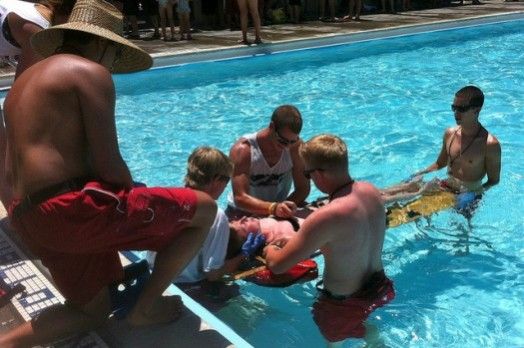[dt_button link=»http://d165vjqq8ey7jy.cloudfront.net/mp3/27272/se-8063s.mp3″ target_blank=»true» button_alignment=»default» animation=»fadeIn» size=»small» style=»default» bg_color_style=»custom» bg_color=»#333333″ bg_hover_color_style=»custom» bg_hover_color=»#444444″ text_color_style=»custom» text_color=»#ffffff» text_hover_color_style=»custom» text_hover_color=»#dddddd» icon=»fa fa-cloud-download» icon_align=»left»]Скачать[/dt_button]
[dt_divider style=»thin» /]
Transcript:
Voice 1
Welcome to Spotlight. I’m Ryan Geertsma.
Voice 2
And I’m Liz Waid. Spotlight uses a special English method of broadcasting. It is easier for people to understand, no matter where in the world they live.
Voice 1
Tong was a 9 year old boy. He lived in Vietnam. One day he wanted to go to the computer store. Tong’s mother had to work. So he asked a friend to go with him. His friend could not go either. So, Tong left home alone.
Voice 2
Tong did not come home that night. His parents looked everywhere for him. His mother told UNICEF,
Voice 3
“We could not find him. So we asked the neighbours to help us. My son never went to the water, so no one even thought to look for him at the river. We looked around the house instead and the nearby area. The river was the last place…”
Voice 1
Tong’s family did find him. But sadly he was dead. He had drowned in the river near his home.
Voice 2
Like Tong, many young children around the world die from drowning. In October 2012, the World Health Organization released a report. It showed that drowning was the third most common cause of accidental death. And children have the highest risk of drowning. But people can prevent drowning accidents with basic knowledge and training. Today’s Spotlight is on water safety.
Voice 1
Around the world, children and adults enjoy the water. Water is fun to play in. But it can also be very dangerous. Knowing how to swim is important for staying safe in the water. However, just knowing how to swim is not always enough. Natural water, such as rivers, flow in one direction. This current can be strong. In lakes and oceans currents can change direction. Often, swimmers cannot see these currents. And the currents can be strong enough to pull swimmers under the water. But even without currents, still water can also be deadly.
Voice 2
When someone is under water, the biggest danger is water getting into the person’s lungs. This can lead to death by drowning. Drowning can affect people of any age or swimming skill. But children and people who do not know how to swim are most at risk for drowning. So, knowing the signs of drowning can save a person’s life.
Voice 1
Dr. Francesco A Pia is a public safety expert. In his work, he studies the actions of people who are drowning. He says a major problem is that most people do not recognize the signs of drowning. In television shows and films, people who are drowning usually shout for help. They also struggle a lot in the water. Many people think this is what drowning looks like. But Pia says these people are not drowning. They are in aquatic distress. They know they are in trouble. And they are still mentally and physically able to shout and reach for help. Pia told Slate magazine,
Voice 4
“Except in rare situations, drowning people are not physically able to call out for help. The lungs and respiratory system were designed for breathing. Speech is the secondary purpose. Breathing must happen before speech can happen.”
Voice 2
Pia also said that people who are drowning do not struggle in the water. Instead, their bodies stay straight. Often their arms move out — away from the sides of their body. This position helps them lift their mouth above water. Often, the person’s head will move up and down, in and out of the water. This is the body’s natural reaction. Pia calls this the “Instinctive Drowning Response.” This response takes all of a person’s energy. So they are unable to make any other movements. And people can only do this for 20 to 60 seconds.
Voice 1
Knowing the signs of drowning is important. Regis Seng learned these signs in a water safety class he attended. And it was good that he did. One day, Seng was at a party. There were adults watching children play in a human-made swimming pool. Seng noticed an 8-year-old boy experiencing “Instinctive Drowning Response.” He described the event to the Christian Science Monitor news organization.
Voice 5
«When other people saw the child, they thought he was playing. They thought he was acting like he was drowning. Even the two people caring for him thought that. Then we looked at him and thought why is he not moving, he is just floating. It was very frightening.”
Voice 2
Thankfully, Seng had also learned how to rescue victims of drowning. He had studied water safety with David Hunt. Hunt is a rescue expert and swim teacher. He works at a swimming pool in Phnom Penh, Cambodia. When Hunt began working at this pool, he noticed the lifeguards were not well trained. These adults were paid to watch the people swimming and to prevent emergencies. But Hunt soon discovered none of the lifeguards had rescue or life-saving training.
Voice 1
Hunt discovered that this was not just a problem at his pool. There were no lifeguard training classes for Cambodians. So Hunt decided to start the first lifeguard training program. He taught his students to recognize what drowning really looked like. He taught them what to do if a boat turned over. He taught them how to safely rescue a person in trouble in the water. He also taught them first aid skills or emergency care they could do while waiting for medical help.
Voice 2
And Regis Seng used the skills he learned in Hunt’s class. He rescued the 8-year-old boy he saw drowning at the party. He explained,
Voice 5
«We jumped into the pool and we swam back to the boy. We used the skills David taught us, like how to hold the head… I felt good that I saved somebody’s life.”
Voice 1
Seng’s knowledge and expert training saved a life. But not everyone can attend water safety training. So, what can you do? Here are some simple rules to keep in mind.
Voice 2
First, learn to swim, and teach children to swim. Also have children and beginning swimmers wear life preservers. These devices help the body float and stay near the top of the water.
Voice 1
Second, never swim alone. This way if you or anyone else has trouble, there is someone around to notice and help.
Voice 2
Third, know your limits. Do not try to hold your breath longer than you are able. Do not swim so far or for so long that you become too tired.
Voice 1
These rules may seem simple, but they can help you stay safe. And by remembering the signs of drowning, you can keep swimmers around you safe too. Working together, we can all make the water more safe!




